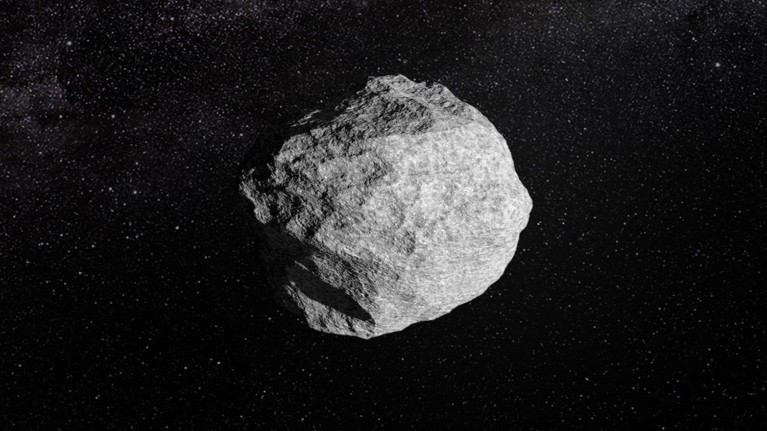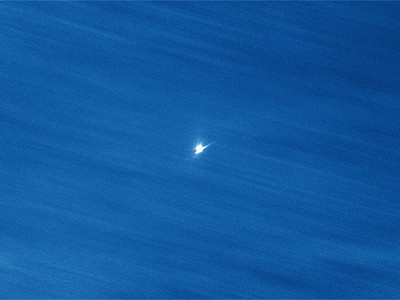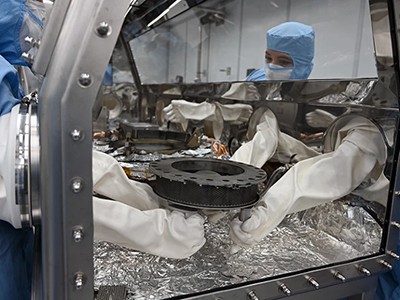
An artist’s impression of an asteroid.Credit: ESA-Science Office
New calculations indicate that the asteroid known as 2024 YR4 is now much less likely to hit Earth than earlier measurements had suggested. Late on 19 February, telescope observations of the object revised down the estimated chance of impact in 2032 from 3.1% — the greatest such threat ever recorded — to a still-worrying 1.5%.

Asteroid lost 1 million kilograms after collision with DART spacecraft
This value is likely to fall even further, to less than 1%, says Richard Moissl, head of the European Space Agency’s Planetary Defence Office, based in Frascati, Italy. As data floods in, uncertainty in 2024 YR4’s ‘impact corridor’ — the path it will take in the vicinity of Earth — is shrinking. As uncertainty in an asteroid’s path gets smaller and Earth’s orbit remains within it, the likelihood of impact grows — this was why earlier this week, space agencies reported that that risk had climbed. But now, Earth is on the fringes of this region and edging out.
YR4 has given researchers the first chance to test an international protocol to respond to such hazards, put in place after the Chelyabinsk meteor hit Earth in 2013 without any warning. And with new asteroid-hunting telescopes coming online all the time, astronomers are likely to see many more close-calls, says Moissl. “It’s not if, it’s when.”
Impact warning
Table of Contents
Asteroids appear on researchers’ radars all the time — but not ones like YR4. First seen in December, by 27 January, the object’s likelihood of hitting Earth had crept above 1%, which triggered the United Nations-mandated International Asteroid Warning Network (IAWN) to spring into action.
IAWN’s network of researchers have been working overtime to precisely calculate the asteroid’s speed and path, says Moissl. They now hope to report an impact risk of below 1% before April, when YR4’s orbit will take it beyond range of ground-based telescopes until 2028.

‘Head-scratcher’: first look at asteroid dust brought to Earth offers surprises
IAWN’s regular practice exercises, using hypothetical asteroids, have taught scientists to focus on quickly obtaining the most important measurements in real-time — those that allow them to pinpoint when and where an asteroid could hit and its potential damage, says Vishnu Reddy, a planetary scientist at University of Arizona in Tucson and manager of IAWN.
This kind of rapid applied science is already familiar to meteorologists and seismologists, he says. “You have to coordinate and understand that you’re doing science to save the world, for the lack of a better term,” he says.
